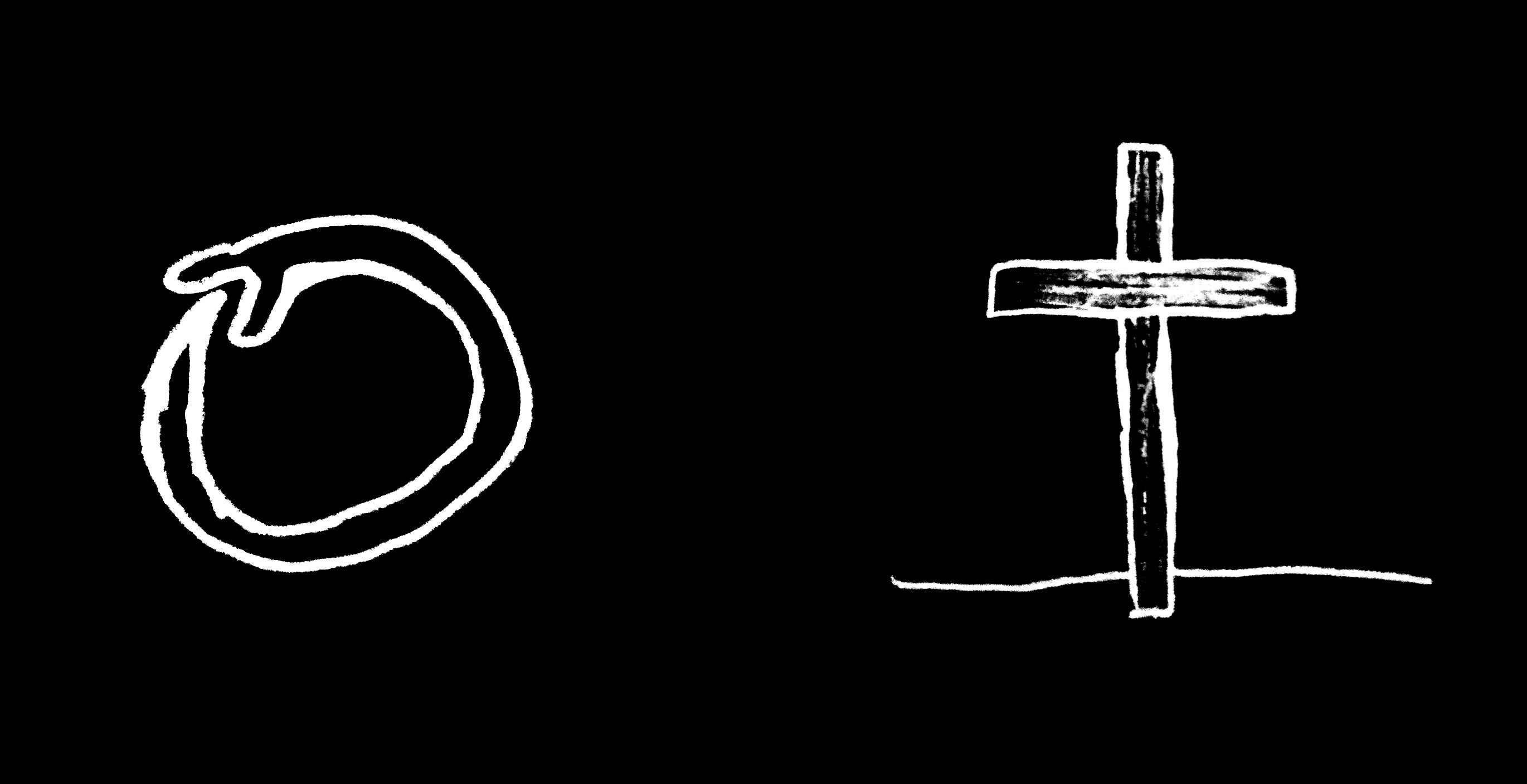

| [homepage] — [blogposts] — [contact-info] |
Dec. 5th, ‘24: Serpent vs. Cross
It has been traditionally understood that the Intellect is represented by a Circle, while the “Body” is represented by a Line of extension; for example, Plotinus’ Fourth Ennead, in its second section (“On the Substantiality of the Soul”), depicts the composition of a soul from a substance that “has flowed-forth as far as the sensible-world, like a line from a centre”1. Through-out the entire Enneads, Plotinus explains the Intellect as a self-circulating circle, coiled into itself; all the while the sensitive body is described as a linear, extended proceeding, stretching-forth unto the world of experience. 
From a Biblical perspective, I would say that the Circle—as a structure of implication and inhibition—is signified by the Serpent (the “Ouroboros”), coiled into itself. The Serpent is indeed the arche-type of intelligence, with his Phronesis (see LXX Gen. 3:1), i.e., his “Prudence” or “Sopistry”. It is true that the Tree of Knowledge itself (as identified with the Serpent) is the tree of Science, of Gnosis, i.e., an Intellect. It is thereby understood that Original Sin consisted in a setback or a “coiling” of Man into himself, constricted into the coat of Flesh; and so, accordingly, it is understood that the anti-thesis of the Serpent, and the salvation from Sin, is the Stauros, that is, the Cross, which is a Line of extension, or an upright, unashamed structure, whose lineation expresses and releases the intelligible into the sensible. 1Taken from the Cambridge University Press translation |